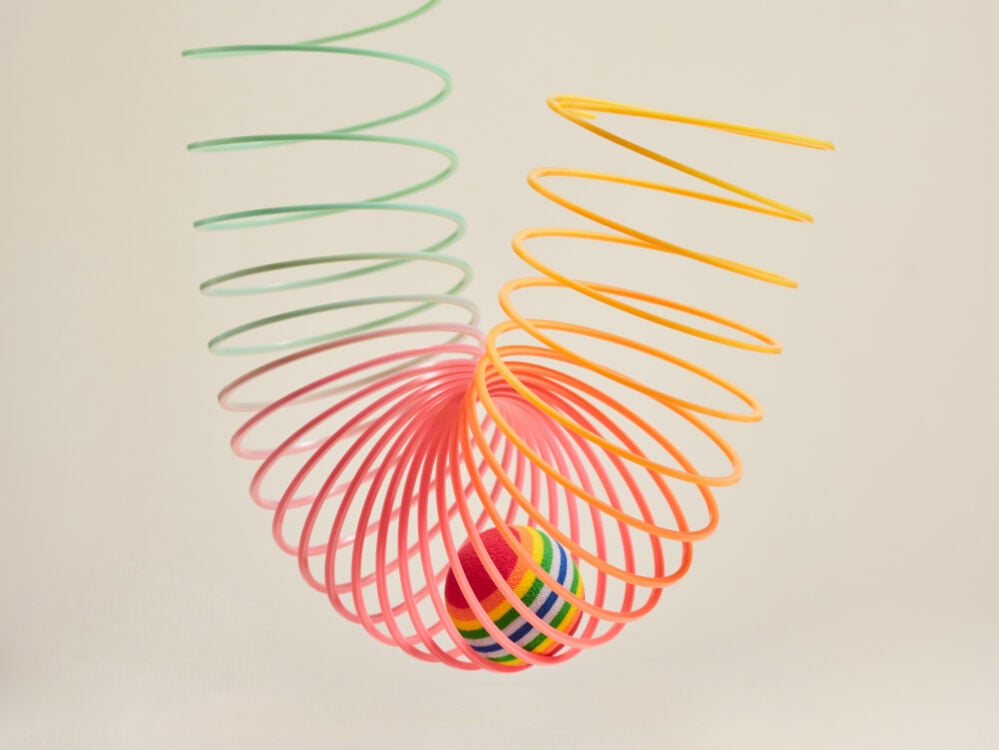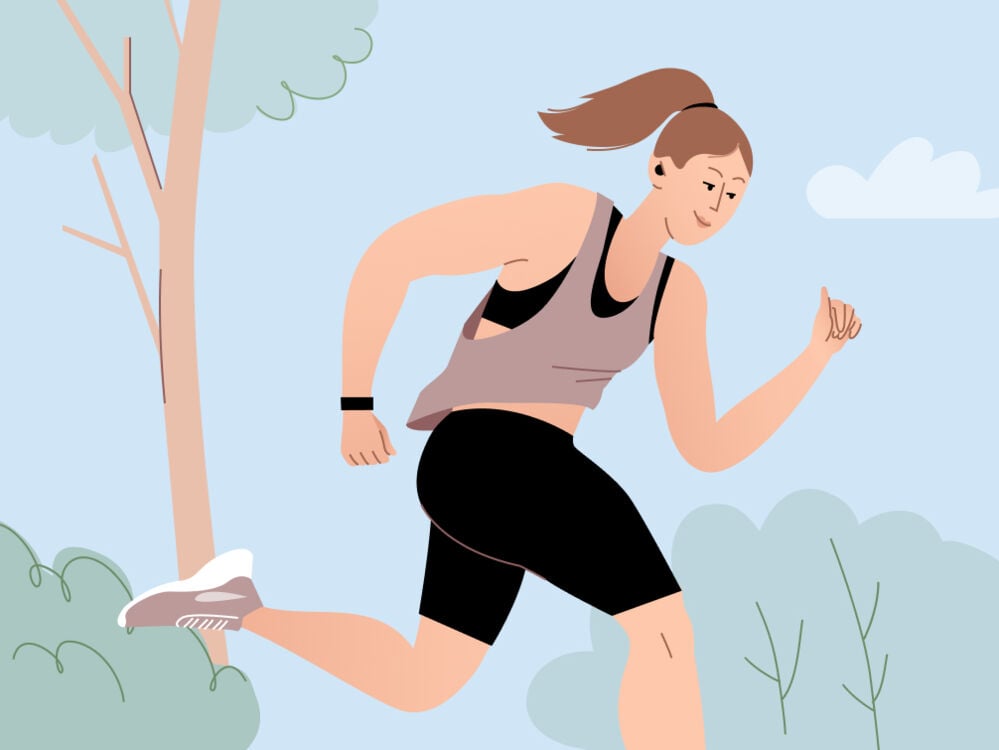Your mood is up one minute, then down the next. Your period must be due. But what actually causes PMS mood swings, and is there anything you can do to manage them?
-
Tracking cycle
-
Getting pregnant
-
Pregnancy
-
Help Center
-
Flo for Partners
-
Anonymous Mode
-
Flo app reviews
-
Flo Premium New
-
Secret Chats New
-
Symptom Checker New
-
Your cycle
-
Health 360°
-
Getting pregnant
-
Pregnancy
-
Being a mom
-
LGBTQ+
-
Quizzes
-
Ovulation calculator
-
hCG calculator
-
Pregnancy test calculator
-
Menstrual cycle calculator
-
Period calculator
-
Implantation calculator
-
Pregnancy weeks to months calculator
-
Pregnancy due date calculator
-
IVF and FET due date calculator
-
Due date calculator by ultrasound
-
Medical Affairs
-
Science & Research
-
Pass It On Project New
-
Privacy Portal
-
Press Center
-
Flo Accuracy
-
Careers
-
Contact Us
PMS mood swings: Why they happen and how to manage them


Every piece of content at Flo Health adheres to the highest editorial standards for language, style, and medical accuracy. To learn what we do to deliver the best health and lifestyle insights to you, check out our content review principles.
For some of us, monthly periods are a breeze. But for others, premenstrual syndrome (which most of us know as PMS) is a total drag. It’s often a sign your period is coming, and it can show up in many different ways. PMS symptoms range from physical symptoms, such as bloating and cramps, to emotional symptoms, like PMS mood swings, which many people find take the biggest toll on their well-being.
Ever noticed yourself sobbing at a TV commercial one minute and fighting the urge to launch your phone across the room the next? Yup, you’re probably one of the three in four women who experiences PMS-related symptoms.
For most people, these are mild, but that’s not to say they don’t cause disruption. Mood swings during PMS can cause “fatigue and depression” before a period for some, explains obstetrician and gynecologist Dr. Barbara Levy, while it can lead others to “become less patient and more intolerant to small irritations.” It’s also typical to feel sadness, anger, hopelessness, loneliness, overwhelm, guilt, or restlessness as part of PMS — not fun for you or the people around you.
Take a quiz
Find out what you can do with our Health Assistant
What causes PMS mood swings?
As with most menstrual-related conditions, you can probably guess what’s at the heart of your changing temperament: hormonal fluctuations. “Mood swings are common whenever hormones change,” says Dr. Levy. “It turns out that hormones have an effect on our brain chemistry, increasing some neurotransmitters and decreasing others.” That’s why emotional symptoms like these PMS mood swings always seem to hit around the same point in your cycle. The sudden dip in hormones that happens before your period can cause you to be irritable for seemingly no reason at all.
Diagnosis
For your symptoms to be medically classified as PMS, they need to:
- Appear five days before your period and end within four days after starting
- Occur during three or more menstrual cycles in a row
- Affect your daily life
It’s worth noting, however, that some people also get PMS symptoms starting at the beginning of the luteal phase, which can be around 14 days before their period starts.
When are PMS mood swings most likely to occur?
If you want to better understand your premenstrual emotions, try logging your symptoms with an app like Flo. It’ll give you a clearer picture of when premenstrual mood swings typically start and how long they last and will arm you with all the right information if you decide to see a health care professional about it.
We all react to hormonal changes in different ways, of course, which is why not everyone who has periods experiences mood swings. PMS symptoms like mood swings are most common in people in their 30s. They may also get worse later into your 30s and 40s or as you enter perimenopause (the transitional period before menopause).
Risk factors
There are some other risk factors when it comes to who experiences PMS. Those who have high levels of stress, a family history of depression, or personal experience with depression or postpartum depression may be more likely to notice unsettled emotions in the run-up to their period.
What period mood swings feel like
If you experience mood swings as one of your most common PMS symptoms, you’ll know things can feel very up and down in the days leading up to your period. But one small consolation may be the fact that it’s certainly not just you who goes through it each cycle. Here’s what Flo users have to say about their period mood swings in our Secret Chats forums:
- “I go from being a reasonable human being to angry in absolutely no time. My mood swings were so bad this time I almost cursed at my boss and quit my job!”
- “Lately, my PMS mood swings can really be felt. One second, I’m all smiley, and then the slightest thing makes me sad.”
- “I get massive PMS mood swings to the point where I take time to myself to avoid feeling like my relationship is doomed. But as soon as my period is over, everything is fine.”
- “I tell myself it’s the hormones, and although what I’m feeling is real, the real me doesn’t respond that way. I try to see mood swings and depression during PMS as purely physical symptoms, like nausea or bloating. It’s a mental trick but helps me stay sane.”
- “[I feel] overwhelmed with sadness and just want to eat copious amounts of junk food in bed. This was me today, and I am used to it. I’ve been forcing myself to go on hikes during this time, and it helps so much. It feels impossible getting out the door on my PMS days, but once I get some exercise in, I feel so much better. I recommend it to anyone who experiences these severe mood swings in PMS.”

When should you seek help for PMS mood swings?
Society tends to speak about PMS in two very binary (and pretty harmful) ways. First: It’s a universal experience, one that everyone who has periods endures every cycle. Second: It isn’t even a thing; it’s just an excuse for bad mood swings and irritability. The first normalizes pain and discomfort, suggesting it’s just a part of life we should put up with. The second trivializes the very real impact PMS has on some people’s lives.
“If you are unable to function well at work or at home, if you have feelings of overwhelming sadness or like you may want to hurt yourself or someone else, it’s time to get help.”
While it is very common and therefore “normal” to experience mood swings as part of your PMS symptoms, that’s not to say you should always have to accept that it’s just a part of your life. Sometimes, it’s important to know when to seek help from a doctor, for example, if you experience more severe symptoms that require some help. You might also want to consult a professional if you're experiencing period symptoms without actually menstruating.
PMS vs PMDD
Up to 8% of women of reproductive age have something called premenstrual dysphoric disorder (PMDD). Often incorrectly referred to as “just bad PMS,” PMDD is actually a severe form of PMS that can totally affect someone’s ability to function during the luteal phase — and a large part of that is related to mood. Commonly, it’s characterized by severe symptoms such as:
- Experiencing a marked loss of energy
- Feeling out of control
- Feeling hopeless
- Having suicidal thoughts
If any of these symptoms sound familiar to you, you may be experiencing premenstrual dysphoric disorder, so it’s a good idea to see a doctor because you shouldn’t feel like you need to navigate it alone. “If you are unable to function well at work or at home, if you have feelings of overwhelming sadness or like you may want to hurt yourself or someone else, it’s time to get help,” advises Dr. Levy.
Seek help right away if you think you might act on feelings of self-harm or suicide — or harm someone else. Call your local emergency number or a suicide hotline, such as 988 Suicide & Crisis Lifeline (United States) or 116 123 Samaritans (United Kingdom). We promise you’re not alone.
How can you manage period mood swings?
Whether you’d classify your premenstrual moodiness as severe or not, there are things you can do and lifestyle changes to embrace to help manage it and make everything more bearable all around. They include:
Filling your week with stress-busting activities
If you know your mood is likely to dip in the few days before your period and your cycle is fairly regular, try to plan for it by working with your PMS. Fill your premenstrual week with stress-busting activities, such as an exercise class, a massage, or a weekend of downtime, and surround yourself with things (or people!) that make you feel great. That might be wearing your favorite PJs or booking a table at that restaurant you’ve been dying to try.
Also, take into account the hardest days of the month, and if you have flexibility in your schedule, try to avoid any big work projects or stressful trips around the times you’re likely to be a little more vulnerable.
Eating a fiber-rich diet
While your low-energy food cravings might mean you make a beeline for the chocolate aisle in your pre-period days, a study published in The Journal of Reproductive Medicine found that might not be a winning strategy. Sugary foods and drinks may actually make PMS worse because they cause erratic blood sugar levels that can impact your mood.
Your best bet? Eat fiber-rich foods throughout the month — think whole grains, oatmeal, brown rice, and leafy greens. These help your gut health and balance out your blood sugar.
Not skipping the workout
Heading to the gym might be the last thing you feel like doing on the days leading up to your period, but a study in BMC Women’s Health found that women who did eight weeks of aerobic exercise reduced both the physical and psychological symptoms of PMS.
Exercise can also help you get a great night’s sleep, which is especially important not only for improving your mood but also because people with PMS are twice as likely to experience insomnia, according to the Sleep Foundation.

Considering medication
If you’re one of the small percentage of people who experiences PMDD, you may need more than a few simple lifestyle changes to see noticeable improvements. Often, this means medication. Some people find that hormonal birth control can help. A study published in the Open Access Journal of Contraception has shown that taking combined hormonal contraceptive pills continuously can improve symptoms of PMDD, so it could be worth chatting with your health care provider about options.
If the psychological symptoms of PMDD are leaving you struggling to manage, antidepressants could also be worth trying. Studies show that between 60% and 75% of people who took selective serotonin reuptake inhibitors noticed “significant” improvements.
Finding a therapist
Cognitive behavioral therapy (CBT) may work alongside or as an alternative to medication for anyone with PMDD dealing with severe premenstrual mood swings. One randomized, controlled trial published in Psychotherapy and Psychosomatics found that an 8-week online CBT program was highly effective at reducing the emotional burden that comes with PMDD, and it improved coping skills too. So that’s another avenue to explore if you feel you need help.
Taking supplements
Many supplements on the market haven’t been researched enough to prove whether they’ll help with PMS, so don’t assume they’re a surefire solution to your emotional symptoms. But there are a few supplements with some research behind them that suggests they might help your PMS.
For example, one study suggests that taking 1,200 mg of calcium a day could help reduce PMS mood symptoms, as well as some of the physical ones. Another study in the Iranian Journal of Nursing and Midwifery Research also showed that vitamin E might help reduce symptoms of PMS. Always seek the advice of a health care provider with any questions you may have regarding a medical condition or treatment.
PMS mood swings: The takeaway
While it would be amazing if PMS didn’t exist, hormonal changes (and the physical and emotional symptoms that come with them) are a normal part of the menstrual cycle. So we’d always encourage exploring what you can do to make mood swings easier to deal with.
As well as the lifestyle changes and treatment options mentioned above (which can be beneficial throughout your whole cycle, FYI, not just in the run-up to your period), it may also be helpful to consider some of the more positive sides to a monthly premenstrual meltdown. You might just find it’s not all bad. For example, PMS can make you more sensitive to both your own and others’ emotions, meaning you might find yourself feeling closer to your loved ones. Alternatively, your period mood swings might give you the urge to spend more time alone, which can provide room for thought, reflection, and ideas to thrive.
Ultimately, your premenstrual days are a time for self-care, patience, and kindness to yourself. So make sure you remember that the next time you become irritated at yourself for welling up at a TikTok video of kittens, okay?


Hey, I'm Anique
I started using Flo app to track my period and ovulation because we wanted to have a baby.


The Flo app helped me learn about my body and spot ovulation signs during our conception journey.


I vividly
remember the day
that we switched
Flo into
Pregnancy Mode — it was
such a special
moment.
Real stories, real results
Learn how the Flo app became an amazing cheerleader for us on our conception journey.
References
Casper, Robert F. “Patient Education: Premenstrual Syndrome (PMS) and Premenstrual Dysphoric Disorder (PMDD) (Beyond the Basics).” UpToDate, 2021.
Dadkhah, Hajar, et al. “Evaluating the Effects of Vitamin D and Vitamin E Supplement on Premenstrual Syndrome: A Randomized, Double-Blind, Controlled Trial.” Iranian Journal of Nursing and Midwifery Research, vol. 21, no. 2, Mar. 2016, pp. 159–64.
Lenton, E. A., et al. “Normal Variation in the Length of the Luteal Phase of the Menstrual Cycle: Identification of the Short Luteal Phase.” British Journal of Obstetrics and Gynaecology, vol. 91, no. 7, July 1984, pp. 685–89.
Lete, Iñaki, and Oihane Lapuente. “Contraceptive Options for Women with Premenstrual Dysphoric Disorder: Current Insights and a Narrative Review.” Open Access Journal of Contraception, vol. 7, Aug. 2016, pp. 117–25.
Mohebbi Dehnavi, Zahra, et al. “The Effect of 8 Weeks Aerobic Exercise on Severity of Physical Symptoms of Premenstrual Syndrome: A Clinical Trial Study.” BMC Women’s Health, vol. 18, no. 1, May 2018, p. 80.
“PMS and Insomnia.” Sleep Foundation, 15 Sep. 2020, www.sleepfoundation.org/insomnia/pms-and-insomnia.
“Premenstrual Syndrome (PMS).” Mayo Clinic, www.mayoclinic.org/diseases-conditions/premenstrual-syndrome/symptoms-causes/syc-20376780. Accessed 23 Mar. 2022.
“Premenstrual Dysphoric Disorder.” Medscape, 18 Oct. 2021, emedicine.medscape.com/article/293257-overview.
“Premenstrual Syndrome (PMS).” The American College of Obstetricians and Gynecologists, www.acog.org/womens-health/faqs/premenstrual-syndrome. Accessed 23 Mar. 2022.
“Premenstrual syndrome: What are the risk factors?” National Institute for Health and Care Excellence, cks.nice.org.uk/topics/premenstrual-syndrome/background-information/risk-factors/. Accessed 20 Mar. 2023.
Rossignol, A. M., and H. Bonnlander. “Prevalence and Severity of the Premenstrual Syndrome. Effects of Foods and Beverages That Are Sweet or High in Sugar Content.” The Journal of Reproductive Medicine, vol. 36, no. 2, Feb. 1991, pp. 131–36.
Shimoda, Rei, et al. “Women’s Emotional and Sexual Attraction to Men across the Menstrual Cycle.” Behavioral Ecology: Official Journal of the International Society for Behavioral Ecology, vol. 29, no. 1, Jan. 2018, pp. 51–59.
Steiner, M. “Premenstrual Syndrome and Premenstrual Dysphoric Disorder: Guidelines for Management.” Journal of Psychiatry & Neuroscience, vol. 25, no. 5, Nov. 2000, pp. 459–68.
Weise, Cornelia, et al. “Internet-Based Cognitive-Behavioural Intervention for Women with Premenstrual Dysphoric Disorder: A Randomized Controlled Trial.” Psychotherapy and Psychosomatics, vol. 88, no. 1, Feb. 2019, pp. 16–29.




